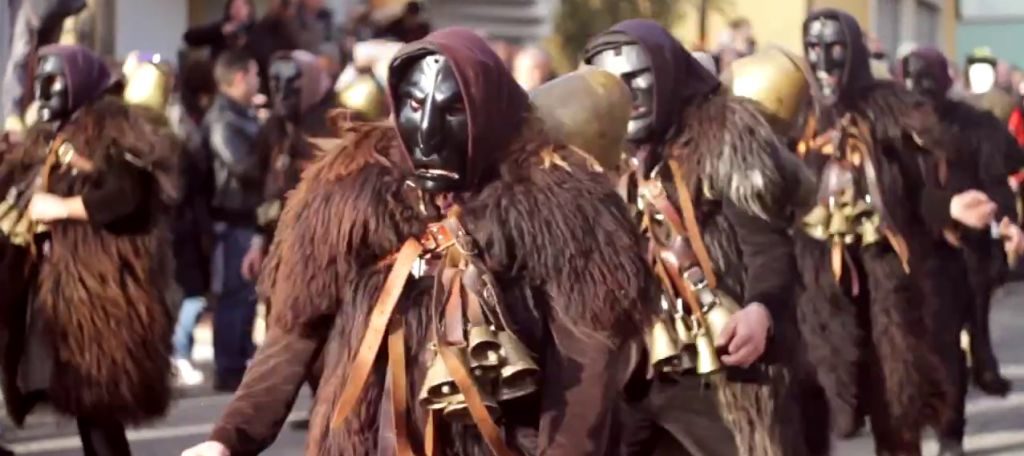
I peer through the smoke, searching for any signs of life beyond the glow of the blaze when I see several mothers suddenly pull their children in close. Just then, Ruggero Mameli, a lifelong Mamoiada resident who had invited me to come witness this event, whispers, "They're coming."
Within seconds, a distant rattling sound shakes the night awake, building slowly with each heavy step until it erupts into a deafening clatter. The sea of spectators parts, I see them, and a chill runs up my spine. Twelve menacing figures in jet-black masks with jutting, ghoulish features and dark sheepskin tunics are inching toward me, weighed down by up to 65 pounds of cowbells strapped to their backs. Their hunched frames slowly drag forward in two rows, eyeing the crowd as they heave themselves into a series of synchronized convulsions that cause the sheep bones inside their copper bells to clang in a thunderous chorus.
"These are not men," Mameli tells me, as the creatures approach the bonfire. "They're mamuthones."
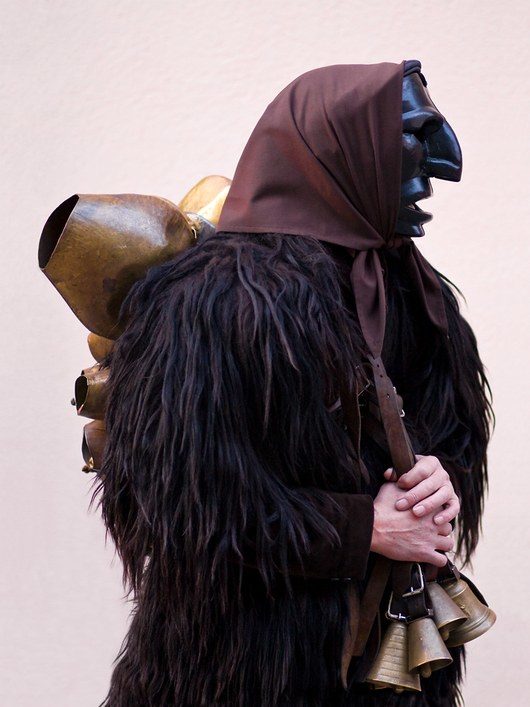
"We feel their presence all year long, and when we speak of them, it is always hushed," says Mameli, who has been hand-carving grimacing and pain-stricken masks out of wild pear, walnut, and chestnut trees for the mamuthones for more than 35 years, since he was 12. "On il continente [mainland Italy], the Carnival is light-hearted, but here it is full of suffering and mystery. It's a part of us. I can't explain it."
No one really can. Some scholars believe the mamuthones and issohadores date back some 3,000 years to the island's mysterious Bronze Age Nuragic civilization and represent a banishment of the dark winter and welcoming of spring. Roman invaders considered the anthropomorphic beasts a form of sacrilegious animal worship that threatened the Christianity they tried to spread. When their repeated attempts to subdue the region failed, they dubbed the area Barbagia after the "barbarian-like" practices of its inhabitants-a name that has stuck and includes much of the island's rural interior. Remarkably, the Barbagia communities near Mamoiada were among the last in modern-day Italy to convert to Christianity, continuing to worship wood and stone until the seventh century.
In fact, away from the island's cosmopolitan capital, Cagliari - where I lived for two years - and the puttering yachts of the Costa Smeralda, Sardinia's craggy interior has historically been one of the most isolated and impenetrable pockets in the Mediterranean. Residents here still speak Sardo, the closest living form of Latin; veiled grandmothers and bands of nomadic shepherds gaze warily at outsiders; and residents fiercely proclaim that Sardinia isn't Italy. This is a hard, uncompromising place-a fact that is announced loud and clear upon entering the village, where the welcome sign in Sardo is left pristine, while that in Italian is ripped through by bullet holes.
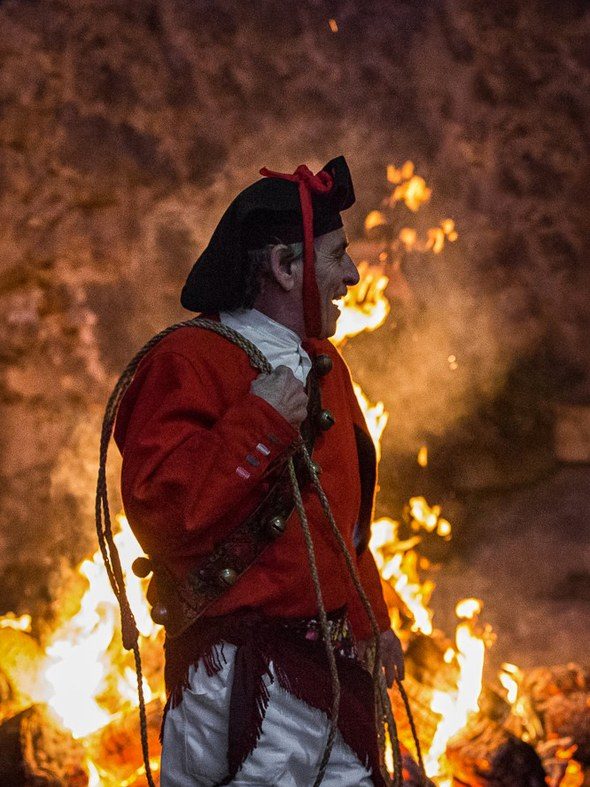
But the scene I'm witnessing is raw, primal, and trance-like. Twelve mamuthones in two even rows representing each lunar cycle stagger forward in unison, their wooly bodies pulled to the ground by the weight of the bells. They shuffle and rattle, first to the left, then to the right, as eight herders in red tunics guard the creatures, jumping around lightly in contrast and launching their reed lassos around squealing women in the crowd as an omen of rebirth and renewal, not just for their families, but also for their fields and flocks. When the issohadore setting the pace in the front of the pack raises his hand to the beasts and lowers it, they obediently shudder three times, as if expelling some evil deep within them, before returning to their hunched, hypnotic state.
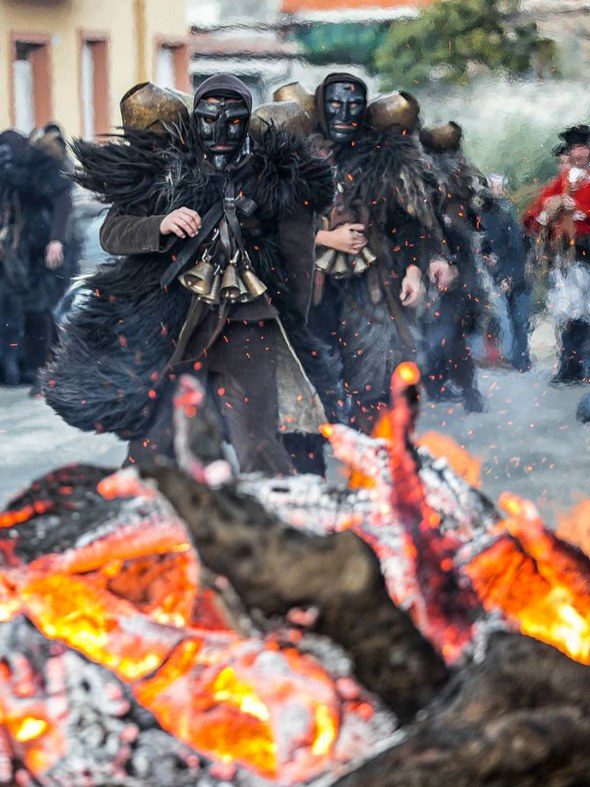
The mass around me bursts into applause and this once-solemn spectacle quickly shifts into an all-night celebration.
The mamuthones are each weighed down by up to 65 pounds of cowbells, strapped tightly across their ribcages and hanging down their backs. The bells' clappers are made from the thigh and neck bones of sheep.
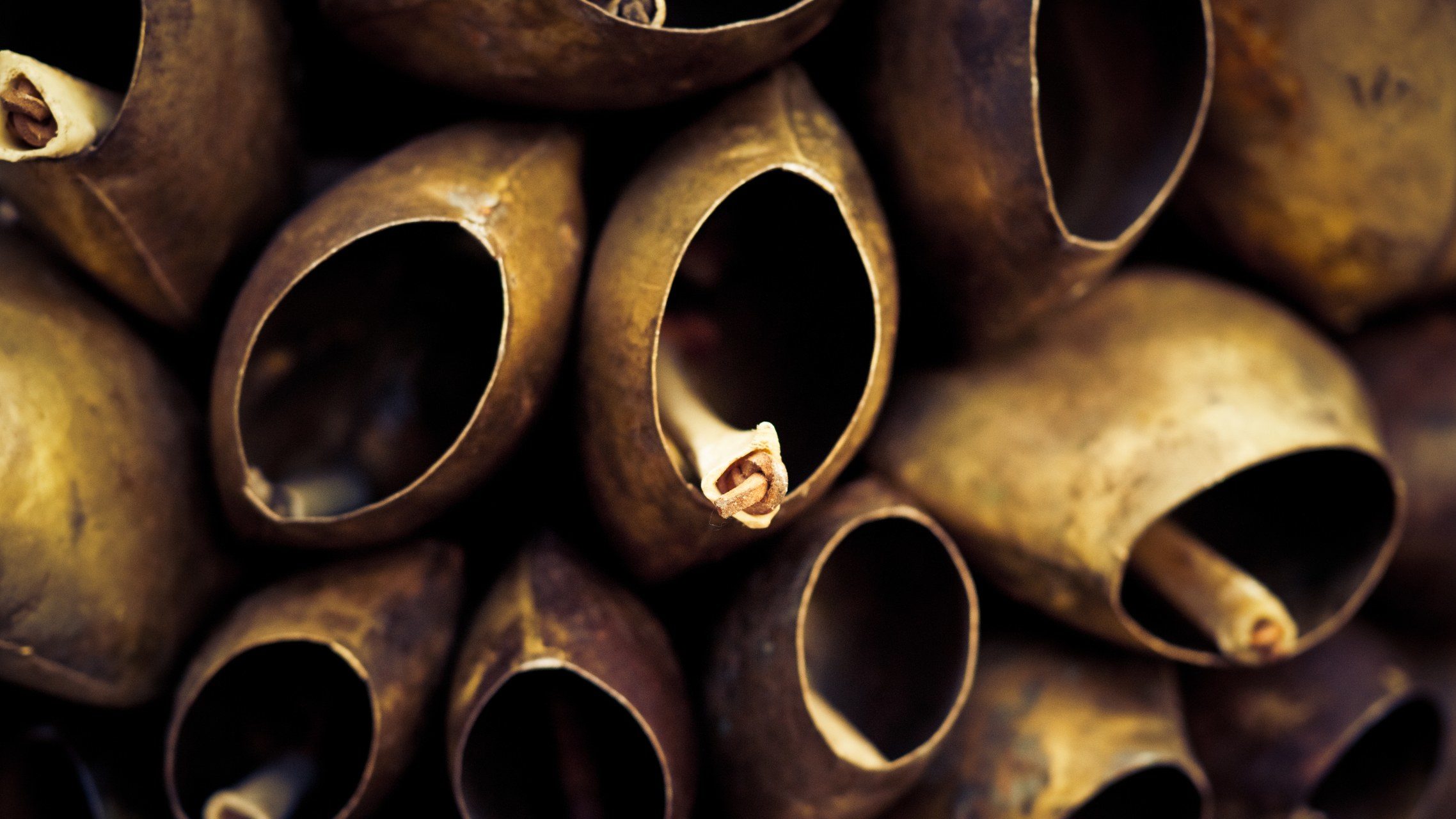
"Follow me," he says, leading me from Mamoiada's squat homes through a series of doorways into the stone courtyard of the Associazione Culturale Atzeni. The association is one of two groups committed to keeping Mamoiada's ancient rite alive, selecting and training more than 200 men and boys to take part in the sacred custom, only a few of whom will ever perform.
"You have to be strong and willing to sacrifice and suffer," says Pino Ladu, the group's president, pointing toward two aspiring mamuthones struggling to unbuckle a harness of bells strapped so tightly around a man's back that he is nearly collapsing. "This thing has existed since the dawn of time. But only some of us ever become it."



Comment: While it may be an amalgamation of traditions, one does wonder what it's original meaning may have been: